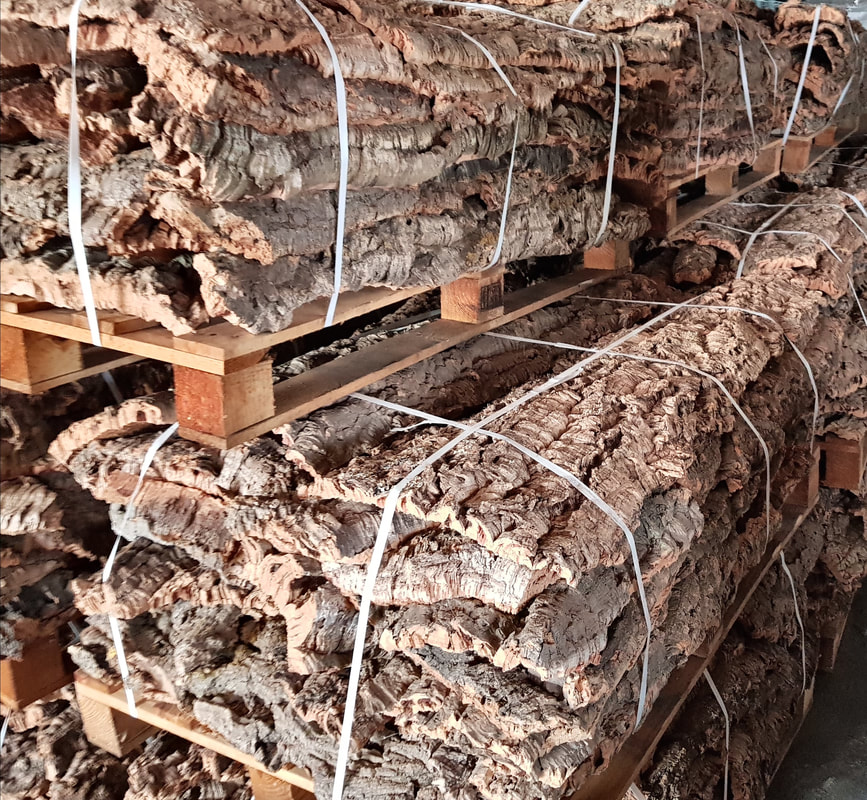News & Events
The Underlayment of the Floor
The Underlayment of the Floor--Cork
Cork is not only used for wine stoppers or coasters. Applying it beneath the floor as underlay is also an excellent choice for many interiors designers. Reading this passage, you will know more about it.
Physical Feature
Cork’s cell contains countless microscopic air pockets, which account for 70% of its cell volume, which endows it with excellent acoustic and thermal interception capacity. Also, the substance called suberin in cork is a natural barrier to moisture intrusion. It’s also the reason cork has been wine stopper without replacement for centuries. For floor, cork can absorb sound and retain heat to the greatest extent. Thus, it’s the preference for places like musical studio or meeting halls. Meanwhile, it also allows the floor to recover very well from compression and puncture to avoid indentation. The cork is harvested from tree bark, preferably oak, which grows mainly in Mediterranean area like Spain and Portugal. The cork tree has a life span that can be as long as 150 years and regenerates its bark every 8-12 years. Workers would slit the outer bark on the trunk with an axe and peel it off by hand without using machine. Then the bark would be put in the open to air dry. The whole process is sustainable and strict regulations are implemented to protect the tree.

Then the bark is chipped into tiny particles, compounded with some binding agent to keep it in form. Applied with glue, the cork sheet will then But in China, some manufacturer would also produce cork form other source to control the cost. The quality would not be as good as that originates from abroad, obviously, but it suffices to be applied as floor underlay.

Advantages
1: It can make you feel better underfoot. Its resilient feature makes it less likely to cause injury when falling over.
2: In areas where the day and night temperature vary a lot, it’s suggested to install floor with cork underlay to avoid great temperature fluctuation. Even if the house is equipped with HVAC system, the cork can also help lower the electricity bill.
3: It has the capacity to absorb extra noise. In place like hotels or hospital privacy and tranquility are required, the cork underlay is always the first choice.
4: The cork is a renewable and green resource, so there is no need to worry about its negative impact on environment. Meanwhile, it’s degradable after disposal.
Disadvantages
1: If the floor is not very thick itself, like 3mm, dents could happen, especially in the room with many heavy furniture or appliance. Though the cork will recover itself shortly after the heavy loads are removed, it’s still suggested to put some plastic pad under the furniture legs. The same goes with high heels.
2: Though most floor comes with water-proof feature, but the none of them can be used as water barrier. If the cork is not fully cured in production, bacteria may remain inside the cork. With some unintended spill into the grout line, it may give birth to molds and emit bad smell without notice.
In conclusion, cork is always an excellent option for floor underlay for its comfort, durability and high-end enjoyment. However, it also comes with high price. The IXPE or EVA pad are popular replacement nowadays.





.png?v=20250509)


 Richard Liu
Richard Liu +86.519.8585.1798 Fax:+86.519.8585.6878
+86.519.8585.1798 Fax:+86.519.8585.6878 info@xinflooring.com ( 7*24 hours online)
info@xinflooring.com ( 7*24 hours online) Science & Technology, Industrial Park, Hutang Town, Wujin District, Changzhou City, Jiangsu Province, 213162, China.
Science & Technology, Industrial Park, Hutang Town, Wujin District, Changzhou City, Jiangsu Province, 213162, China.